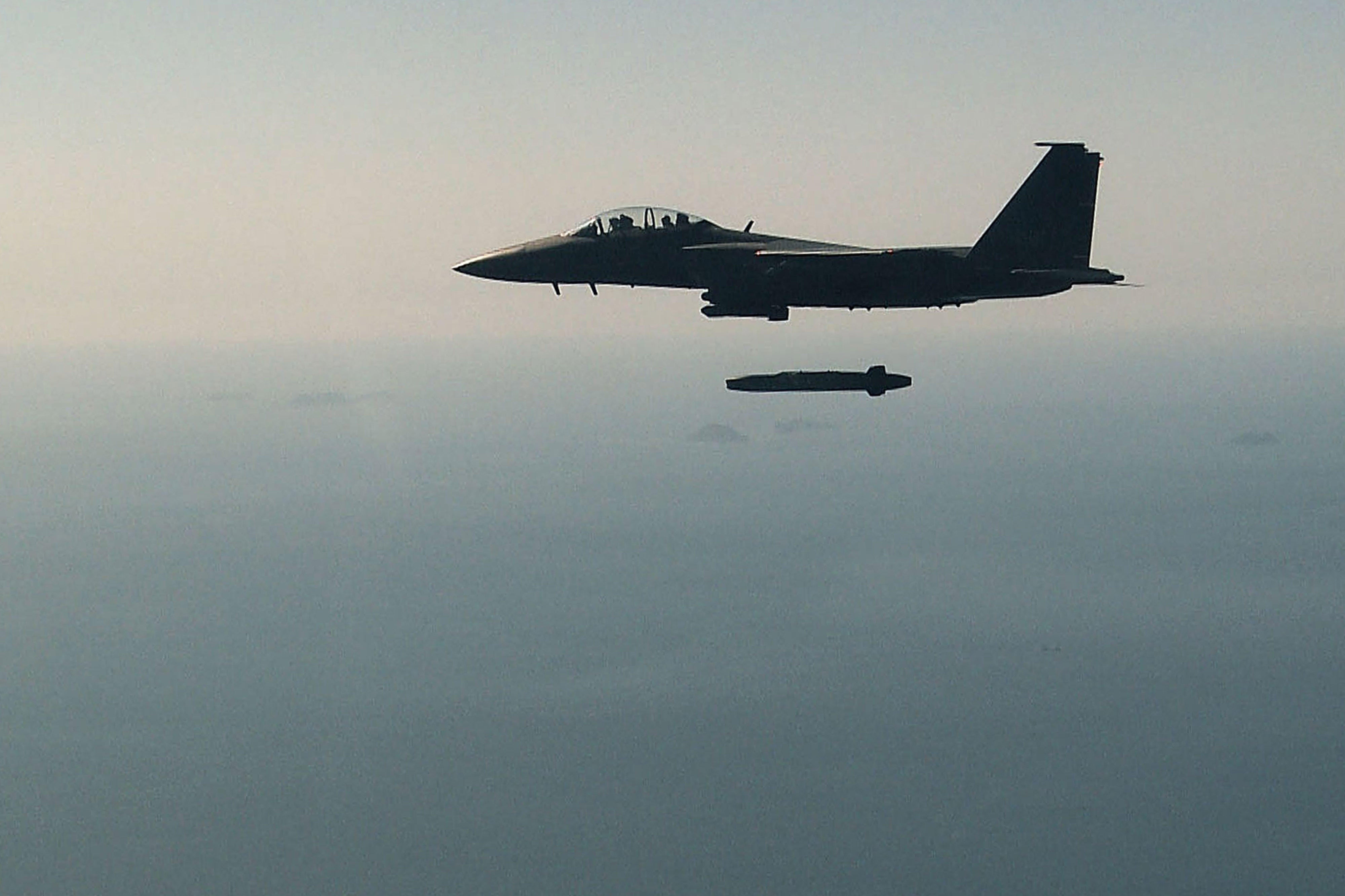Table Of Content

Top military officials have argued that an increased reliance on submarines and bombers would exhaust the force. Two parallel studies have been contracted by the MOD, to MBDA (formerly Matra BAe Dynamics) and Aerosystems UK. MBDA, teamed with Lockheed Martin Aeronautical System, BAe Airbus and Flight Refuelling Limited, has been contracted to perform feasibility and concept studies for both the overall FOAS CALCM system and the missile itself. European Command’s operational series Atreus, which aims to conduct training events on capabilities found in Europe. The 352nd Special Operations Wing is based at RAF Mildenhall in England, and the MC-130 was from the wing’s 67th Special Operations Squadron.
North Korea says it tested ‘super-large’ cruise missile warhead and new anti-aircraft missile
Cancelling the New Sea-Launched Nuclear Cruise Missile Is the Right Move - War On The Rocks
Cancelling the New Sea-Launched Nuclear Cruise Missile Is the Right Move.
Posted: Tue, 05 Dec 2023 08:00:00 GMT [source]
The upgraded avionics package was retrofitted into all existing CALCM (Block 0) so all AGM-86C missiles are electronically identical. The CSIS Missile Defense Project’s monthly newsletter has info on the project’s latest publications, events, and missile defense news. Air Force received a final proposal for the Long-Range Standoff Weapon (LRSO) and is preparing to seek approval for the system’s engineering and manufacturing development.
Air Force
He previously covered leadership and personnel issues at Air Force Times, and the Pentagon, special operations and air warfare at Military.com. The USAF adopted the AGM-86 for its bomber fleet while AGM-109 was adapted to launch from trucks and ships and adopted by the USAF and Navy. The truck-launched versions, and also the Pershing II and SS-20 Intermediate Range Ballistic Missiles, were later destroyed under the bilateral INF (Intermediate-Range Nuclear Forces) treaty with the USSR. Photos released by the North’s official Korean Central News Agency showed at least two missiles being fired off launcher trucks at a runway.
AGM-158C LRASM
The Rapid Dragon system, initially developed by Air Force Special Operations Command and the Air Force Research Laboratory (AFRL), uses an air-dropped pallet to launch cruise missiles or other systems. The ability of the U.S. strategic ballistic missile force to hold targets at risk and thereby deter an adversary from nuclear aggression looks secure. The Trident II SLBM has an outstanding record (more than 150 consecutive successful test flights). The United States has long maintained a triad of ICBMs, submarine-launched ballistic missiles (SLBMs), and bombers to deter a nuclear attack on America or its allies.
But the low-flying mission profile and the pilot’s ability to recognize threats and avoid them were also undoubtedly factors. In the 1970s, when U.S. military planners originally conceived of the cruise missile, the kamikazes were likely not far from anyone’s mind. One advantage is that, unlike nuclear-armed ballistic missiles, bombers can conduct conventional strikes, as they have over the past two decades in the skies above Iraq, Afghanistan, and Syria.
Russian Su-35 Fighters, Armed With Stealth X-69 ALCMs Spell Doom On Ukraine; Can Strike From 400 KM - EurAsian Times
Russian Su-35 Fighters, Armed With Stealth X-69 ALCMs Spell Doom On Ukraine; Can Strike From 400 KM.
Posted: Fri, 19 Apr 2024 07:09:56 GMT [source]
In recent months, the Pentagon has faced increased scrutiny over efforts to develop next-generation intercontinental ballistic missiles to replace the nation's aging Minuteman IIIs. In 2017, the service awarded contracts to Lockheed and Raytheon to begin preliminary work on LRSO. The agreements were valued at $900 million each and were to last almost five years "to mature design concepts and prove developmental technologies," the Air Force said at the time. Raytheon is helping to design and develop the Long Range Stand Off weapon, known as LRSO, the Defense Department announced in awarding the contract Thursday. The work is expected to be completed in February 2027 at which time it would transition into production. Studies are considering all aspects of weapon carriage and release, ground handling, stores management, and operational analysis.

The United States, South Korea and Japan have responded by expanding their combined military training and sharpening their deterrence strategies built around strategic U.S. assets. While some current bombers are expected to fly until 2040, the older B-52s and B-1s would have trouble coping with sophisticated air defenses. The more modern B-2’s stealth gives it the ability to penetrate defenses, but only twenty are in the force. Without them, bombers would probably have to withdraw from the nuclear triad, removing a key capability—the ability to recall or cancel a nuclear strike—from America’s nuclear toolbox. The weapon is planned for the B-52 Stratofortress, as well as the B-2 Spirit and the future B-21 Long-Range Strike Bomber. MBDA also maintains a key position as weapon supplier in the team developing the technology demonstrator programme, with inputs into demonstrators aligned with the new breed of cruise missile system envisaged for the future FOAS mission.
Military.com Network
Among these were airborne early warning aircraft and new weapons like the MiG-31 and Tor missile system specifically to shoot down the AGM-86.[3] The Air Force responded with the development of the AGM-129 ACM, which included stealth capabilities. The ending of the Cold War led to cutbacks in this program, and its expensive maintenance eventually resulted in it being abandoned in favor of life extensions to the original ALCM. In the Soviet Union, Sergei Korolev headed the GIRD-06 cruise missile project from 1932 to 1939, which used a rocket-powered boost-glide bomb design.
The United States has deployed nine nuclear cruise missiles at one time or another. After the collapse of the Soviet Union, the most recent cruise missile developed was the Kalibr missile which entered production in the early 1990s and was officially inducted into the Russian arsenal in 1994. However, it only saw its combat debut on 7 October 2015, in Syria as a part of the Russian military campaign in Syria. The missile has been used 14 more times in combat operations in Syria since its debut.
SCAD was designed specifically to fit onto the same rotary launcher used by SRAM, allowing a single aircraft to carry multiple SRAM and SCAD and launch either at any time. This led to it being the same 14 foot (4.3 m) length as SRAM, and the use of a fuselage with a triangular cross-section, which maximized the usable volume on the rotary launchers. The system was otherwise similar to Quail, using a simple inertial navigation system (INS) allowing the missile to fly a pre-programmed course.
CALCM's next employment occurred in September 1996 during Operation Desert Strike. In response to Iraq's continued hostilities against the Kurds in northern Iraq, the Air Force launched 13 CALCMs in a joint attack with the Navy. This mission has put the CALCM program in the spotlight for future modifications.
While ballistic missiles were the preferred weapons for land targets, heavy nuclear and conventional weapon tipped cruise missiles were seen by the USSR as a primary weapon to destroy United States naval carrier battle groups. Conventional air-launched cruise missiles are an integral part of the FOAS force mix, through the launch of waves of stand-off weapons from positions behind the front line. Studies of fire-and-forget missile technologies are underway on propulsion, on guidance (using millimetre-wave and imaging infrared with focal plane arrays) and on robustness against countermeasures. The CALCM studies are assessing the viability of a range of concepts for the deployment of large numbers of cruise missiles launched from adapted airliners, military transporters or maritime patrol aircraft. Both internal and external carriage options are under evaluation, with launch, command, control and operational issues also playing a key part in force mix assumptions.
Central Command's area of responsibility to attack high-priority targets in Iraq. These "round-robin" missions marked the beginning of the operation's Air Force component and were the longest known aircraft combat sorties in history at the time (more than 14,000 miles (23,000 km) and 35 hours of flight). The United States Air Force (USAF) deploys an air-launched cruise missile, the AGM-86 ALCM.
Since the requirement for such weapons still existed, the military quickly announced a follow-up project with similar goals. Initial contracts for two competing designs were awarded to Lockheed Martin and McDonnell Douglas in 1996, and the missile designations AGM-158A and AGM-159A were allocated to the two weapons. Lockheed Martin's AGM-158A won and a contract for further development was awarded in 1998. Quail was designed in the mid-1950s when the normal attack profile for a strategic bomber was to fly as high and fast as possible to reduce the time the defenders had to respond to the aircraft before it flew out of range. This was effective against interceptor aircraft but of little use against surface-to-air missiles (SAMs), whose attack times were measured in seconds.
CALCM is a long-range standoff weapon that has been employed effectively in combat in Operation Desert Storm, Desert Strike, Desert Fox, Operation Allied Force, Operation Enduring Freedom and Operation Iraqi Freedom. As SCAD moved from the pure-decoy role to decoy-and-attack, this meant it would be able to carry out the same mission as SRAM, but from much longer range. Accordingly, in June 1973, SCAD was canceled in favor of a system dedicated purely to the long-range attack mission. The original designation number remained, but the name changed to reflect the new mission, becoming the Air Launched Cruise Missile, or ALCM. These missiles travel faster than the speed of sound, usually using ramjet engines.
While free-fall bombs typically have large explosive yields (the B83 has a yield of 1,300 kilotons, for example), the bomber must overfly the target. Bombers can launch the ALCM at targets up to 1,500 miles away, but enemies can shoot the cruise missile down. A cruise missile also takes up to 2 hours to reach its target, and it can’t be recalled during that time.
